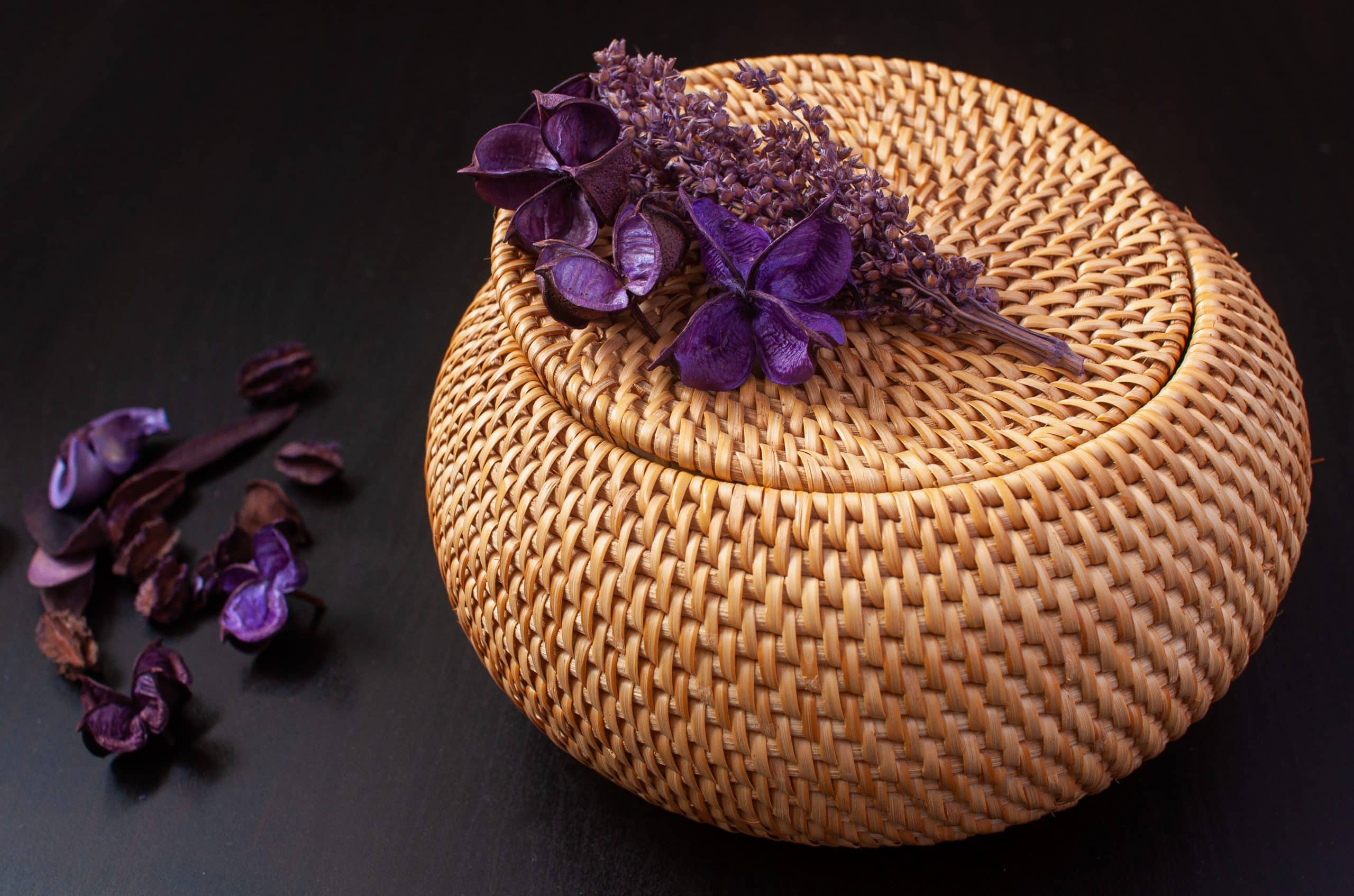As environmental consciousness continues to grow, there has been increased interest in eco-friendly farewells. People are becoming more aware of the impact traditional burial practices can have on the environment and are seeking alternative options. Green burials are that option.
Although not the norm, a 2024 National Funeral Directors Association survey indicates that 68% of people are somewhat interested in natural burials. And the number of natural cemeteries in the US has grown from 1 in 1998 to 220 currently, suggesting that green burials are slowly becoming an accepted alternative to above-ground burial or cremation. Only a few of these green cemeteries are designated Conservation Ground burial sites that specifically aim to restore natural habitat.
If you’re curious about green burials, here’s an explanation of what they involve.
What Is a Green Burial?
Perhaps you’ve heard the term “green burial,” but still wonder, “What is a green burial?” Although no longer considered a fringe fad, and awareness of this option is growing, green burials still are not the most common choice. Most people understand that a green burial is the interment of a body in a way that doesn’t slow down or prevent decomposition, but it may be unclear what the practice entails.
A green burial is a simple, more environmentally friendly form of burial that doesn’t involve embalming chemicals, caskets made of metal or wood, and concrete vaults. It is designed to have little to no negative impact on the environment.
Rather than embalming chemicals, the green burial practice uses biodegradable materials that allow bodies to decompose naturally and return to the earth. The deceased is laid to rest in a biodegradable container or shroud instead of an ornate casket.
Elements of a green burial include:
- Using recycled or sustainable materials for the coffin or shroud
- Avoiding the use of chemicals, like embalming fluids
- Not using a vault or liner
- Having a gravesite that will naturally decompose over time
- Using biodegradable grave markers or natural grave markers
Green burials value simplicity over an elaborate burial process and are in keeping with the values of conservation and ecological responsibility. They honor loved ones by returning them to the earth with respect for their body and their surroundings.
History of Green Burials
While they may seem like a new trend, green burials date back thousands of years. They were the most common burial method until around the Civil War. Muslims and Orthodox Jews still essentially use green burial practices. Even ancient Egyptian and Chinese civilizations that used mummification to preserve the entombed bodies of royalty and elite members of society, what we consider green burials, were used for the majority of the population.
Scientific researchers began working on ways to embalm bodies during the Renaissance to preserve organs for further study. By the 1800s, as these methods improved, embalming was used so that the bodies of loved ones who passed away far from home could be transported back for burial. Eventually embalming became standard procedure to prevent the spread of certain diseases after death, especially as viewing periods lengthened.
Why Green Burials Are a Natural Choice for Many Families
Many people find that natural burial is a meaningful choice that supports a strong emotional and environmental bond while also being in line with their ideals. By emphasizing environmentally sustainable methods, this strategy promotes a peaceful return to nature and offers a permanent memorial to the departed. Natural funerals are a choice that genuinely resonates with families because of their simplicity and authenticity.
Making a living, growing tribute to your loved one is one of the most beautiful parts of a natural burial. The burial location becomes a dynamic memorial that changes over time if families decide to plant trees, bushes, or flowers. It’s a living monument that nourishes the earth and gives family members a way of spiritually connecting with loved ones for a very long time.
Why Choose a Green Burial?
Natural burials aren’t limited to any one type of person – the reasons people choose them are varied. Green burials often resonate with those who prioritize eco-friendly practices, want a deeper connection to nature, or want a special way to honor their loved ones’ lives. The most personal reason for this is that this pared-down approach simply speaks to a person.
The Environmental Benefits of Green Burials
Whether you’re considering a green burial for yourself or a loved one, understanding its environmental benefits can help you make an informed decision.
- Reduces Carbon Emissions: Green burials absorb about 25 pounds of carbon dioxide, while traditional burials release around 250 pounds into the air.
- Conserves Natural Resources: Because this approach uses caskets made from biodegradable materials such as cardboard, wicker, or untreated wood or shrouds made from cotton or linen, this approach conserves non-renewable natural resources like stone or metal.
- Avoids Harmful Chemicals: Green burials do not use embalming chemicals, which can contaminate the soil and water.
- Preserves Biodiversity: Natural cemeteries protect and restore ecosystems by supporting the growth of native plants and providing a safe habitat for wildlife, including insects, birds, and small animals.
These considerations underscore the compassionate and sustainable nature of a green burial. It’s a way to honor the deceased while minimizing the environmental footprint and contributing positively to the planet’s well-being.
Biodegradable Burial Options: Caskets, Shrouds, and Urns
The biodegradable materials used in green burials ensure a minimal environmental footprint. These eco-friendly materials not only reduce the environmental impact of the internment but also create a meaningful connection to nature. They honor the cycle of life and death, ensuring that burial contributes to the health of the planet rather than harming it.
Biodegradable Caskets
Made from unfinished wood, wicker, or cardboard, biodegradable caskets naturally decompose over time, without leaving behind pollutants or waste. A highly attractive and sustainable choice, they are gentle on the environment and seamlessly blend into natural landscapes.
Burial Shrouds
Made from organic cotton, linen, hemp, wool, and other biodegradable materials, burial shrouds provide an alternative to caskets, enveloping the body in a simple, natural fabric that allows for decomposition.
Biodegradable Urns
For those choosing cremation, biodegradable urns made from materials such as salt, sand, wicker, or recycled paper degrade naturally when placed in the earth or water. These alternatives ensure the cremains return to the environment in a sustainable way.
Some people choose to make their own biodegradable containers, making the funeral even more unique and meaningful.
Conservation Burial Grounds: Returning to Nature
Green burials are usually associated with conservation burial grounds that allow the deceased to return to the earth and preserve natural habitats. Conservation burial grounds help protect and preserve natural areas. Instead of being laid to rest in a conventional cemetery, the deceased is buried in a protected conservation ground. These dedicated areas ensure that burial sites remain undisturbed and contribute to the protection of native flora and fauna. The natural process of decomposition in healthy soil recycles the body into nutrients for the ecosystem.
Unlike traditional cemeteries, which often require extensive landscaping and maintenance, conservation burial grounds prioritize the natural preservation of the ecosystem as well as the body, allowing for an interment process that enhances rather than disrupts the environment. When you choose one of these sites, you contribute to long-term land conservation efforts, ensuring that green spaces remain intact for future generations.
Green Burial Laws and Regulations
Green burials are legal in every state, but each state has its own regulations and laws governing interment practices. Some states have been slower than others to legislate this issue. In all states, regulations allow for the burial of unembalmed bodies in biodegradable containers or shrouds and require a permit and death certificate.
Some states go further with regulations around the placement and depth of the grave, and some cemeteries limit burial sites to approved conservation areas or mandate special biodegradable casket requirements. Ten states have legislation that stipulates only a funeral director can transport the deceased and obtain the necessary permits and death certificates.
These regulations are intended to guarantee that human remains are buried in a way that honors the environment and the departed. If you are considering a green burial, check the regulations in the state and requirements of the cemetery or burial ground where you or your loved one plans to be interred.
Note: In Florida green burials are legal but unregulated. The state generally allows for burial of unembalmed bodies in biodegradable caskets or shrouds, and a certificate of death and a burial permit is required.
Cost Comparison: Green Burial vs. Traditional Burial
For many, the case for green burials is not about cost, but rather about making choices that support environmental sustainability. The cost very much depends on the cemetery in question and whether you use the services of a funeral director. Because they don’t require embalming, vaults, or ornate caskets, green burials can be less expensive, depending on the choices you make. Many families discover natural burials provide economic, environmental, and spiritual advantages without sacrificing a respectable and significant burial. Prices can vary based on region and particular preferences.
Contact The Gardens Today
Pre-planning your funeral benefits you and your family, regardless of what type of interment you are considering. In many instances, only the deceased’s loved ones can attend a green burial, so as to minimize environmental disturbance and promote natural decomposition. However, you can choose to have a traditional funeral service that allows family and friends to honor the deceased.
When you are ready to take this step, contact us to speak with a professional who will help you explore all the options.



